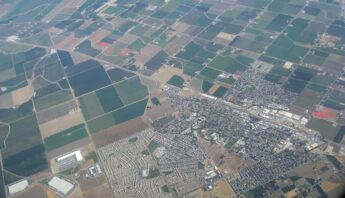Ah, back to school. It’s a transitional time for parents and kids alike. But for those living in California’s agricultural communities, this season also brings renewed worry and frustration that the state still hasn’t taken steps to curtail use of brain-harming and cancer-causing pesticides near schools.
The Department of Pesticide Regulation (DPR) recently announced a risk assessment for the insecticide chlorpyrifos — but state officials are ignoring the wealth of research showing its neurotoxic properties. And a new state report highlighting air monitoring data shows that schools in rural, agricultural areas are still being drifted on by chlorpyrifos and other pesticides, including carcinogenic Telone, being used in nearby fields.
School should be a place of learning and growing, not a source of exposure to health-harming chemicals.
Time for chlorpyrifos to go
We have talked about the hazards of chlorpyrifos now for years, backed by a clear and compelling body of rigorous, peer reviewed scientific studies. Even the U.S. Environmental Protection Agency (EPA) determined in 2016 that all food uses of chlorpyrifos should be stopped due to the high risk of children’s exposure in utero or during critical periods of growth. Chlorpyrifos most directly impacts kids’ developing brains and bodies, and has been linked to autism, ADHD and other neurodevelopmental issues.
But in the draft risk assessment released last Friday, California’s DPR ignores this wealth of evidence — and analysis from EPA scientists. Instead, the state is pinning its assessment to flawed historic data and recommending a new “safe level” of chlorpyifos exposure for pregnant women that far exceeds the federal level of concern (61,500 nanograms per cubic meter vs. EPA’s 2.1 ng/m3).
While the public comment period for California’s risk assessment is open until October 2, DPR will be hosting a public workshop on September 15. Communities across the state will be expressing their forceful and thoughtful opinions on this issue, urging meaningful and swift action — including increasing distances between sites where the chemical is applied and sensitive locations like homes and schools.
After the public comment period concludes, the risk assessment will be going to an independent panel of nine scientists for review. Even though Californians have been pushing for an end to agricultural uses of chlorpyrifos for years, this process may not wrap up until December 2018.
In the face of industry opposition, it’s a testament to huge community pressure that DPR is willing to do even this much. However, there is much more the state can and should do to protect kids where they live, learn and play.
As Sarah Aird, co-director of Californians for Pesticide Reform, said:
The next steps and timeline proposed by DPR are just like small band aids on a gaping, gushing wound. The science is crystal clear — children’s brains are being harmed by chlorpyrifos and other drift-prone pesticides across California. DPR must take forceful action and protect California’s children. Now.”
Pesticides in the air
The air monitoring data released this month paint a troubling picture of pesticides in the air. Along with chlorpyrifos and cancer-causing Telone, a total of 25 pesticides were detected at DPR’s air monitoring stations — some near schools.
Chlorpyrifos was found far in excess of the levels considered safe by EPA in Kern County, with air concentrations on the campus of Shafter High School at 39.4 nanograms per cubic meter (ng/m3) over a one month period. This is more than18 times higher than EPA’s level of concern for pregnant women (2.1 ng/m3).
Telone was also found in alarming quantities in the air across the state. The Shafter air monitor data revealed that annual average air concentration of Telone nearly doubled over 2015 concentrations (increasing from 800 ng/m3 to 1,560 ng/m3), and measured more than twice the previous DPR regulatory level for cancer risk (650 ng/m3).
DPR, do better
DPR is currently finalizing regulations to enact quarter-mile, “no spray” buffer zones around schools. And while this is certainly a move in the right direction, public health experts cite the inadequacy of these buffer zone widths — and the fact that it will only be in place for certain hours in a day.
While DPR takes measured or wholly inadequate steps to protect children across the state, we’re calling on Governor Jerry Brown to light a fire under the agency. Kids deserve the opportunity to grow and thrive without pesticides undermining their well-being.







